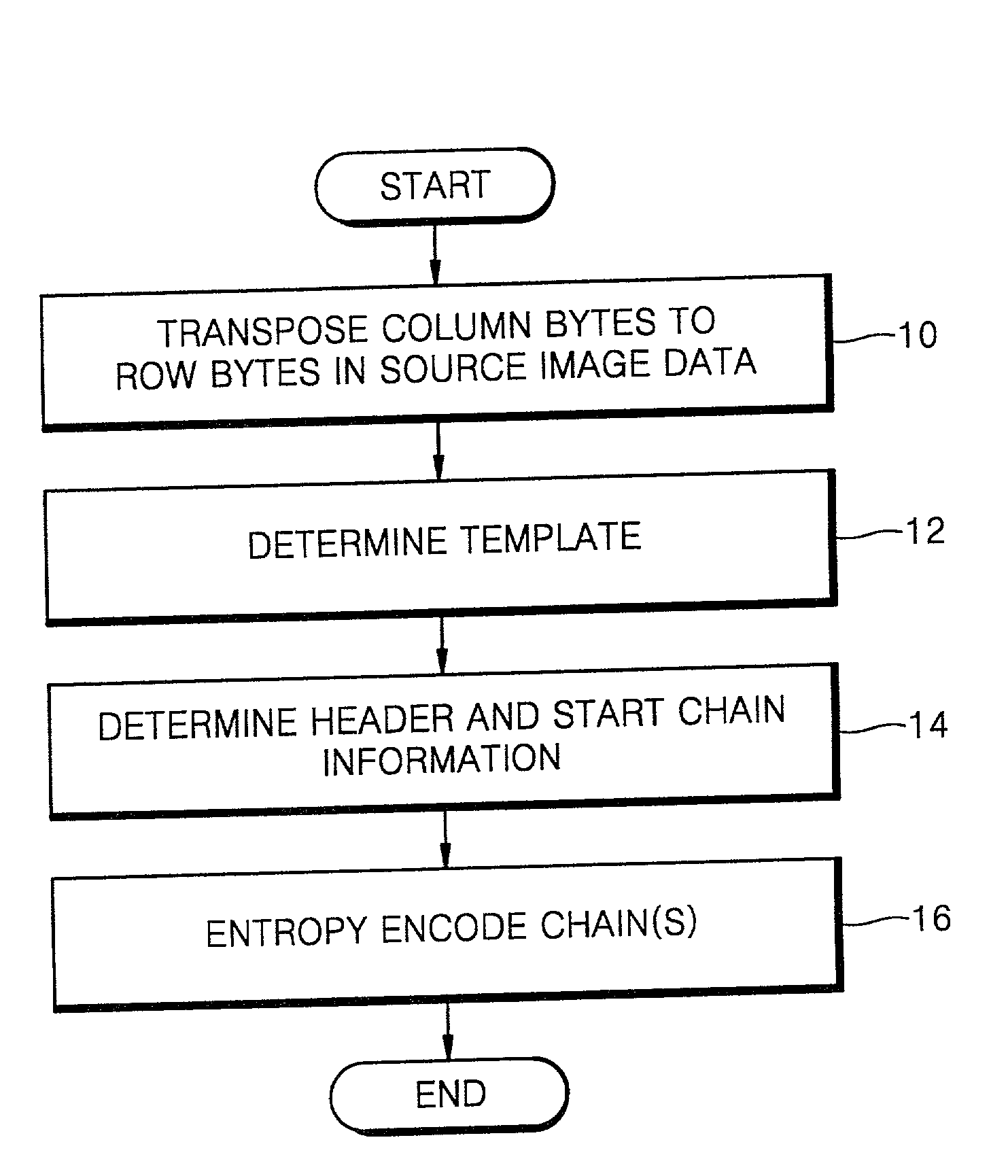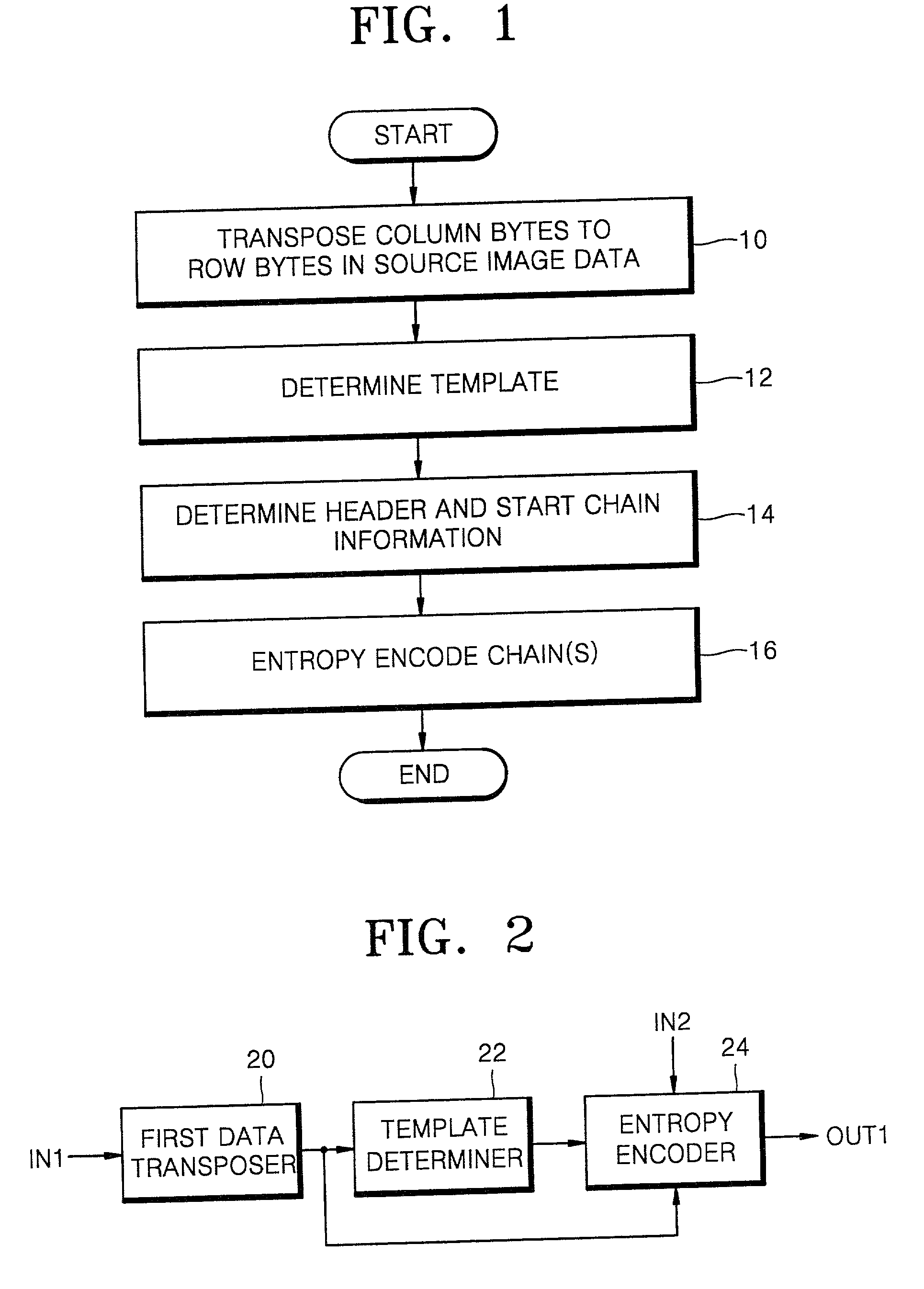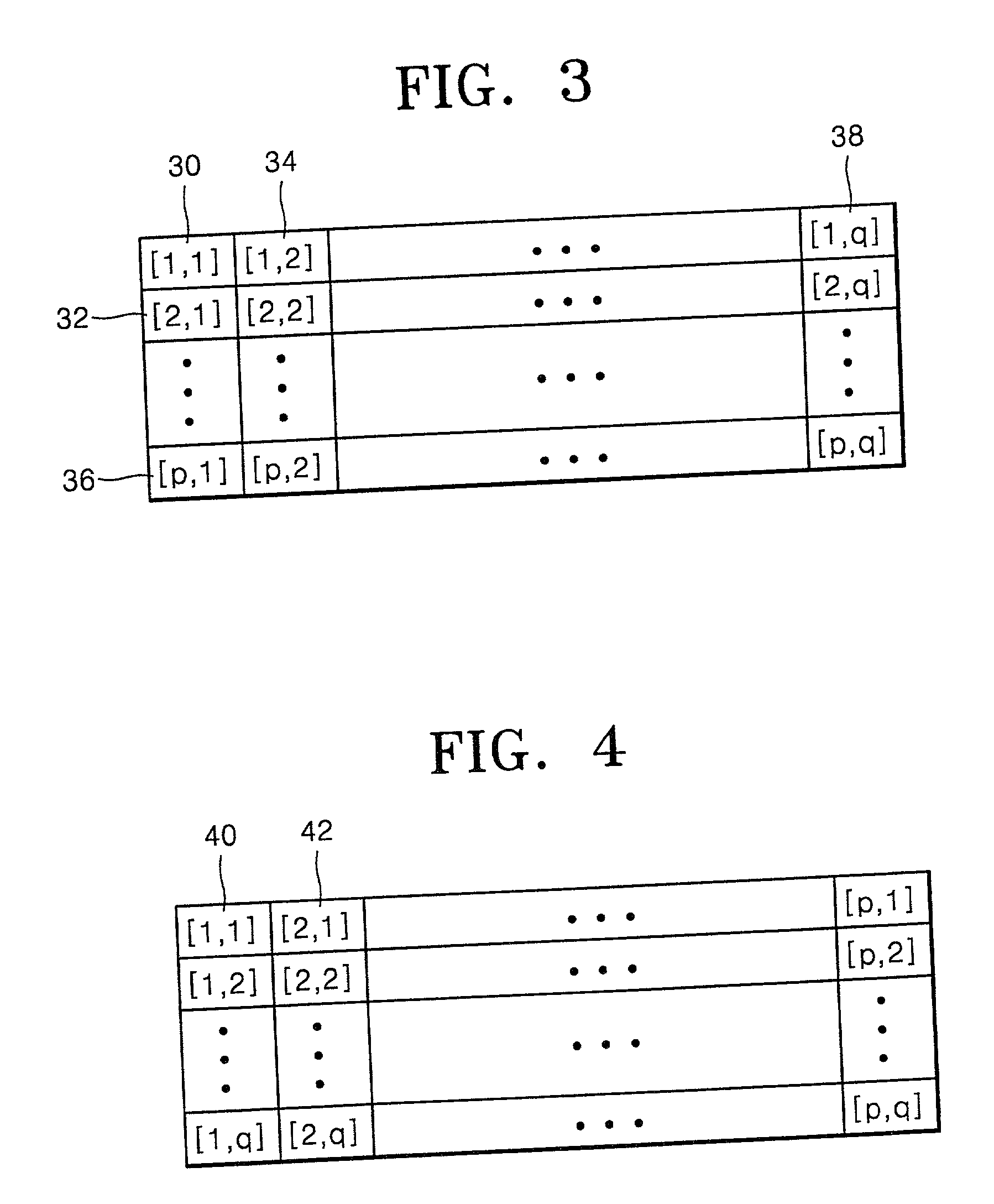Data compression and reconstruction methods and apparatuses for hard copy device
a data compression and reconstruction technology, applied in the field of hard copy devices, can solve the problems of slow and variable compression speed of hard copy, low data compression ratio of hard copy devices with such high spatial resolution, etc., and achieve the effect of improving compression ratio and compression speed
- Summary
- Abstract
- Description
- Claims
- Application Information
AI Technical Summary
Benefits of technology
Problems solved by technology
Method used
Image
Examples
Embodiment Construction
[0049] While the present invention will be described more fully hereinafter with reference to the accompanying drawings, in which preferred embodiments of the present invention are shown, it is to be understood at the outset of the description which follows that persons of skill in the appropriate arts may modify the invention here described while still achieving the favorable results of this invention. Accordingly, the description which follows is to be understood as being a broad, teaching disclosure directed to persons of skill in the appropriate arts, and not as limiting upon the present invention.
[0050] Illustrative embodiments of the invention are described below. In the interest of clarity, not all features of an actual implementation are described. In the following description, well-known functions or constructions are not described in detail since they would obscure the invention in unnecessary detail. It will be appreciated that in the development of any actual embodiment ...
PUM
 Login to View More
Login to View More Abstract
Description
Claims
Application Information
 Login to View More
Login to View More - R&D
- Intellectual Property
- Life Sciences
- Materials
- Tech Scout
- Unparalleled Data Quality
- Higher Quality Content
- 60% Fewer Hallucinations
Browse by: Latest US Patents, China's latest patents, Technical Efficacy Thesaurus, Application Domain, Technology Topic, Popular Technical Reports.
© 2025 PatSnap. All rights reserved.Legal|Privacy policy|Modern Slavery Act Transparency Statement|Sitemap|About US| Contact US: help@patsnap.com



